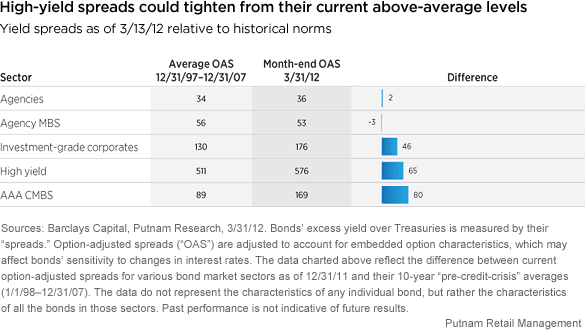We continue to find a number of reasons for a positive outlook on the high-yield bond sector. First, the long-term average spread in the high-yield market is close to 500 basis points, so today high-yield spreads are at above-average levels. But at the same time, the fundamental backdrop for high-yield corporate bonds continues to be quite strong, with record earnings for publicly traded companies and large amounts of cash on corporate balance sheets.

Over the long term, the reason high-yield bonds offer a spread advantage is to compensate investors for the risk of default. Historically, that par-weighted default rate has been 4.2%. However, today the market has a par-weighted default rate of 1.9%, which is well below the long-term average, and we believe that trend is likely to continue over the near term.
Looking back at historical default patterns in high-yield investing, there have tended to be rather prolonged periods of below-average defaults following a spike in the default rate. The last significant peak occurred in November 2009, when defaults exceeded 13%.
Many of today’s businesses that survived the crisis are running very lean organizations, with strong balance sheets and historically large levels of cash on hand. In the current economic environment — which represents a significant improvement from the depths of the recession and financial crisis in 2008 and 2009 — we believe that the companies within the high-yield universe should be able to continue to grow their businesses and that the default rate, as a result, ought to remain low.
Today, in our view investors are being paid more than usual in the form of higher yields for assuming below-average default risk.
Read our perspective on second-quarter fixed-income opportunities and risks below or download as a pdf.
Funds that invest in bonds are subject to certain risks including interest-rate risk, credit risk, and inflation risk. As interest rates rise, the prices of bonds fall. Long-term bonds are more exposed to interest-rate risk than short-term bonds. Unlike bonds, bond funds have ongoing fees and expenses. Lower-rated bonds may offer higher yields in return for more risk.
More in: Fixed income, International, Outlook



